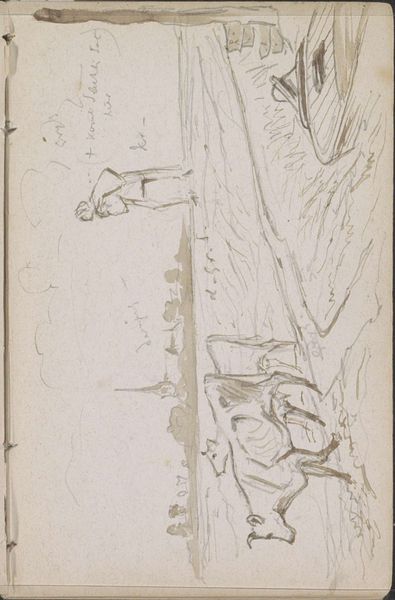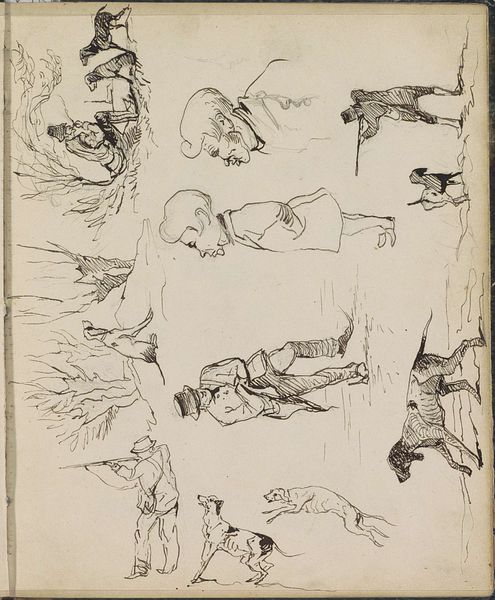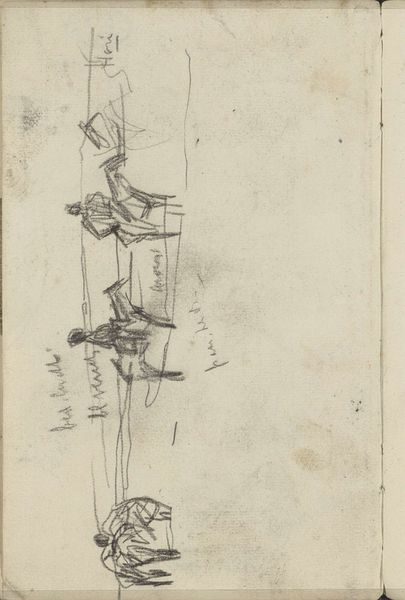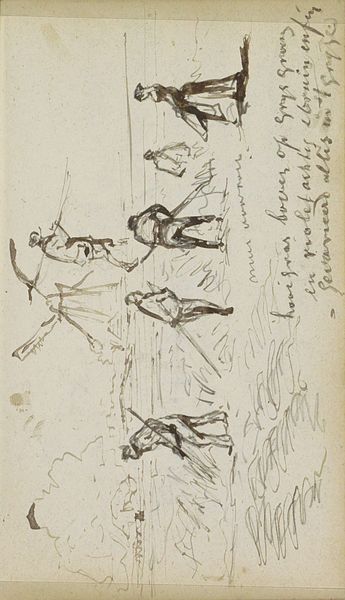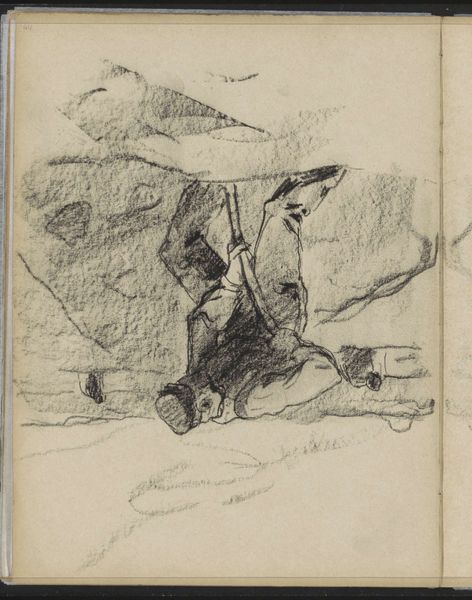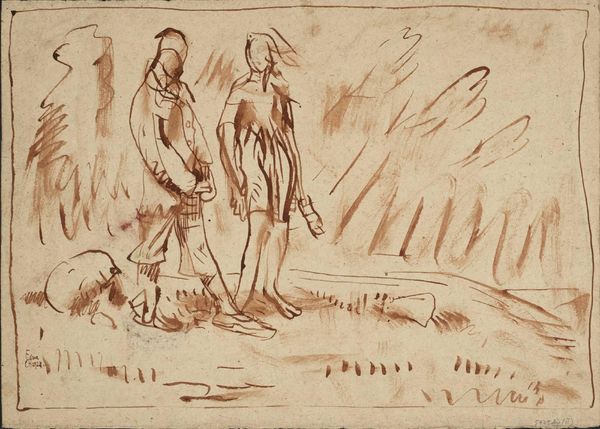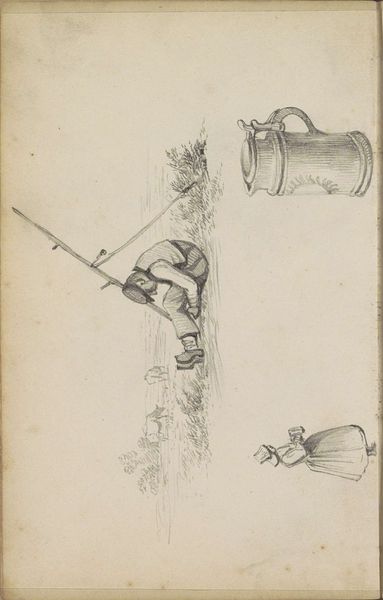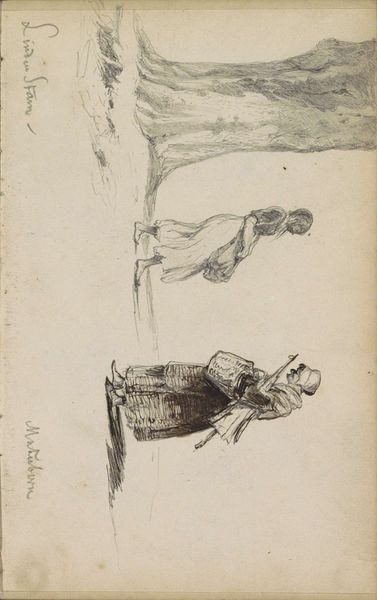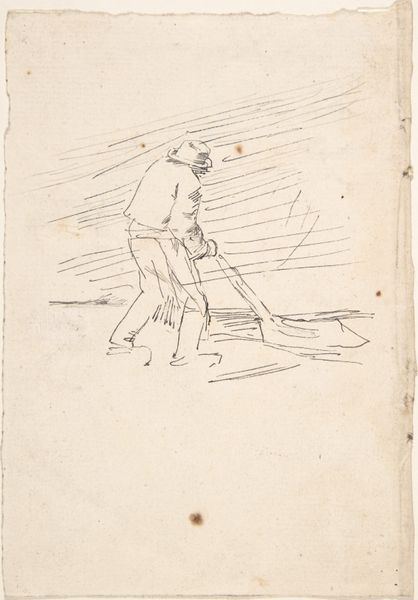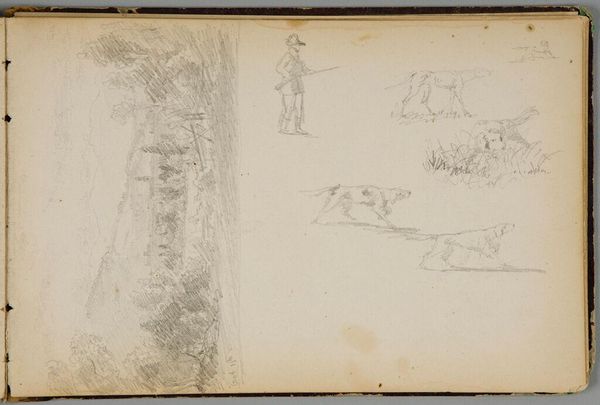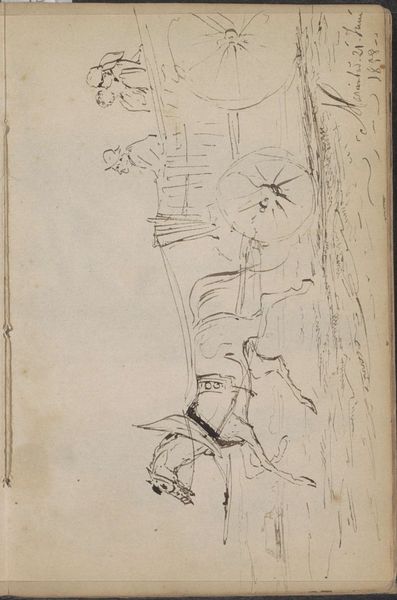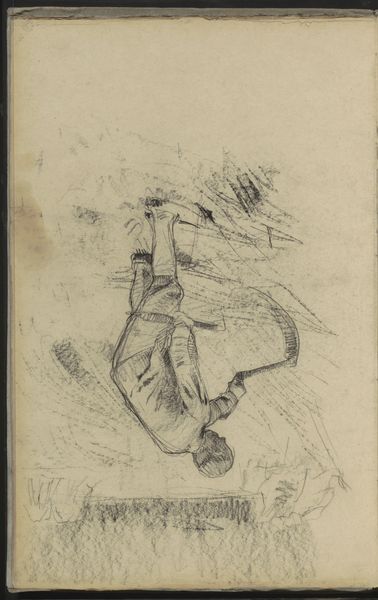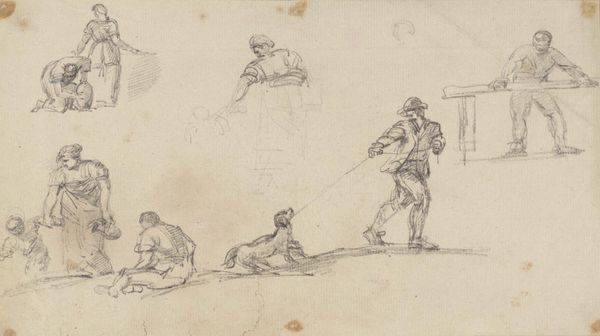
drawing, pencil
#
drawing
#
pencil sketch
#
landscape
#
pencil
#
genre-painting
Copyright: Rijks Museum: Open Domain
Curator: Here we have "Arbeiders die met harken hooi wiersen," or "Workers Turning Hay with Rakes," a drawing made with pencil around 1862 to 1864, by Johannes Tavenraat. It’s now held at the Rijksmuseum. Editor: It feels incredibly immediate, like a quick sketch done on location. The figures are simply rendered, but you can feel the weight of their labor. Curator: Indeed. This drawing reflects the broader social and economic landscape of the time, capturing the realities of rural labor and agricultural practices. Artists often depicted scenes of everyday life to highlight the dignity of work. Editor: The loose sketch aesthetic also humanizes the workers; they are not romanticized heroes, just figures caught in a moment. I’m interested in how the unfinished background focuses our attention on them and their repetitive task. Is he commenting on the working classes? Curator: It’s difficult to say definitively what Tavenraat's specific intentions were. Without explicit statements from the artist, our interpretation remains speculative. More generally, it reflects the rise of genre painting that depicted ordinary people going about their daily lives. Editor: Do we know anything about his working relationship with labourers or what sort of political ideas shaped the social role of the artist? Curator: Tavenraat moved in circles of artists interested in realist portrayals of modern life. He sought opportunities to sketch figures engaged in agricultural tasks. Whether his focus involved political intention remains to be discovered through future research. Editor: To me, this pencil drawing offers a glimpse into a moment of history that usually goes unrecorded. It’s about more than hay-turning; it's about making labour visible and demanding. Curator: It is important to examine this work alongside historical developments like agrarian reform movements seeking to elevate agricultural labor. By focusing on their place in the fields, Tavenraat prompts viewers to think critically about labor’s economic and societal place. Editor: This exploration reinforces my perspective, confirming how art acts as both a mirror and an agent in representing historical tensions and initiating societal dialogues. Curator: A great example of how art, like this unassuming sketch, helps reveal broader truths by shedding light on common stories from a very particular time.
Comments
No comments
Be the first to comment and join the conversation on the ultimate creative platform.
